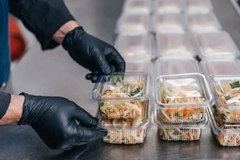Co-op axes colored milk bottle caps in UK for increased recyclability
18 Nov 2022 --- Co-op is replacing all colored milk bottle caps from its skimmed, semi-skimmed and whole milk packaging with clear caps to reduce color contamination in the high-density PE (HDPE) stream, allowing materials to be recycled more easily into food-grade packaging. The move is expected to reduce 150 metric tons of plastic per year.
The move follows successful consumer trials on semi-skimmed milk in more than 400 Co-op stores in August and with “clear” recyclability gains to be made, green caps will be switched to clear in all of its stores by the end of next month. The changed portfolio can be found in all of Co-op’s stores across the UK.
“There are changes in store for how shoppers see milk bottle tops, with the new caps able to be more easily recycled and retained in the food sector, unlike their colored counterparts. There is limited availability of food-grade recycled plastic, and that is a challenge. It is important that packaging is viewed as a valuable resource,” says Adam Williams, Co-op’s milk buyer.
Recycling benefits
In early 2023, Co-op will eradicate red (skimmed milk caps) and blue (whole milk caps). Once all caps have been switched, it could remove more than 150 metric tons of colored plastic from HDPE streams annually. Switching all green caps first is set to unlock recyclability benefits, with semi-skimmed accounting for more than three-fifths of milk sales.
 Once all caps have been switched, Co-op says it could remove more than 150 metric tons of colored plastic from HDPE streams annually.Innova Market Insights has identified “Caps Uncovered” to be one of the top packaging trends for 2022. The statement “100% recyclable, excluding the cap” has been a feature of bottles for some time. However, as the market analyst highlights, new EU legislation is concentrating efforts on caps as necessary and active components of the circular economy.
Once all caps have been switched, Co-op says it could remove more than 150 metric tons of colored plastic from HDPE streams annually.Innova Market Insights has identified “Caps Uncovered” to be one of the top packaging trends for 2022. The statement “100% recyclable, excluding the cap” has been a feature of bottles for some time. However, as the market analyst highlights, new EU legislation is concentrating efforts on caps as necessary and active components of the circular economy.
“We continue to work to explore new ways to make it easier to recycle and reuse these materials, and small changes to everyday issues can collectively add up to make a big difference – this is a ‘clear’ solution that can reduce the dependency on virgin plastic in the supply chain,” says Williams.
Keep the cap on
Adam Herriott, sector specialist – resource management, WRAP, adds: “WRAP fully supports the complete removal of pigments from HDPE milk bottle caps by Co-op, a founding member of The UK Plastics Pact.”
He asserts the development has helped the HDPE milk bottle increase its reputation as a “shining light” of the circular economy, and will enable the caps to be recycled with the bottle and go back into food-grade applications. Therefore, it will be able to be recycled multiple times into high grade and high-value materials and products.
Earlier this year, Müller partnered with Waitrose on a trial to replace colored milk bottle caps with clear ones. Müller says the move could boost the availability of recycled HDPE (rHDPE) on the market by 1,560 metric tons annually.
With demand for rHDPE reportedly outstripping supply, keeping the material within a closed-loop system can help drive up its availability and reduce dependency on virgin plastic, the company said.
“It is, however, still vitally important that citizens follow the Recycle Now and OPRL advise of ensuring that they recycle their bottle with the ‘cap on’ so they are captured and recycled effectively – we must all continue to go further and ensure we bring in more changes that benefit shoppers and the environment,” concludes Herriott.
By Natalie Schwertheim











